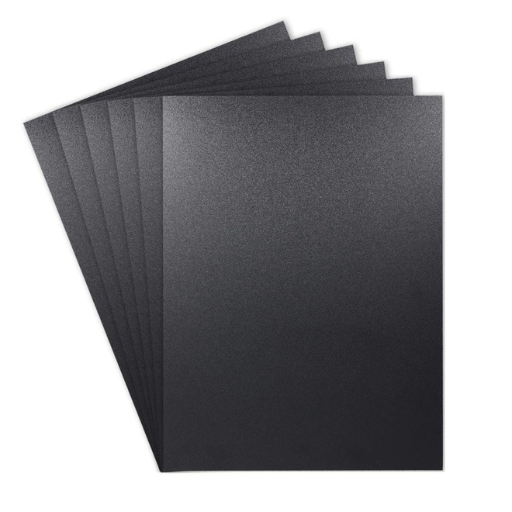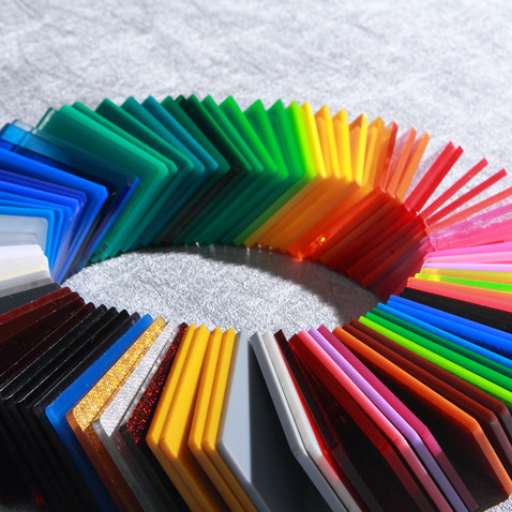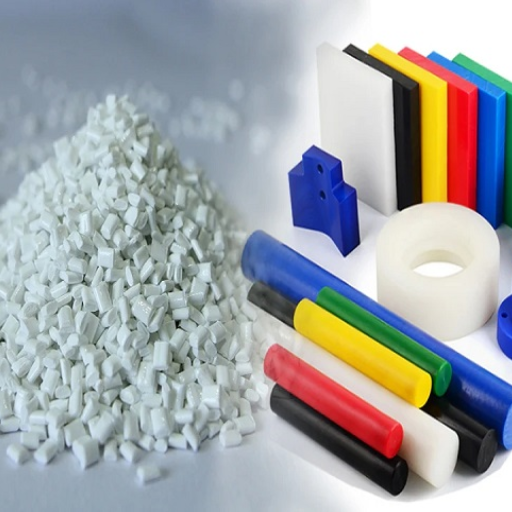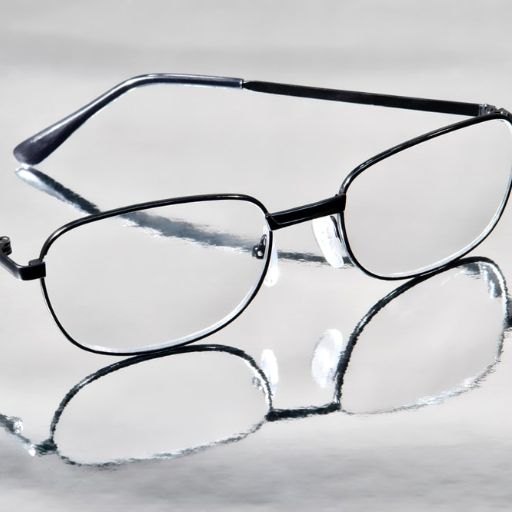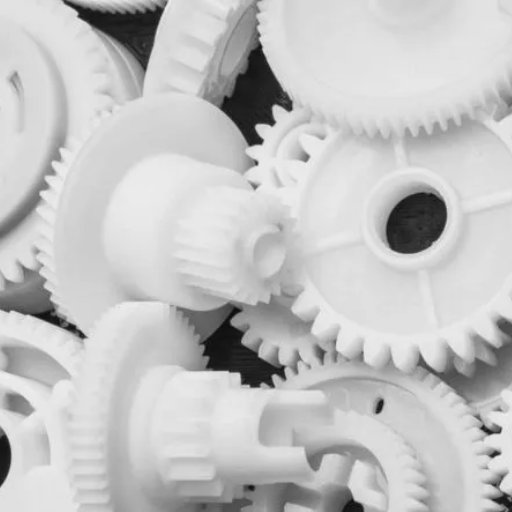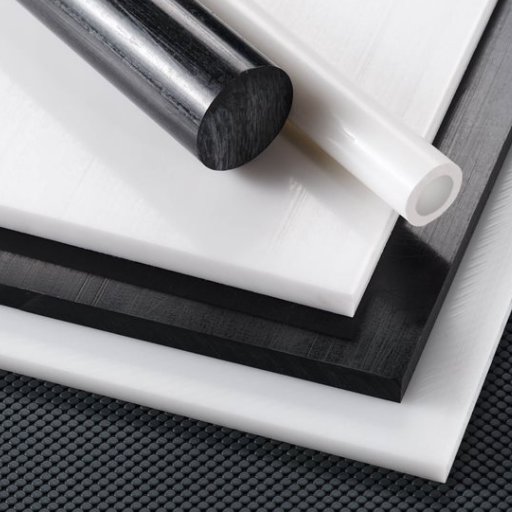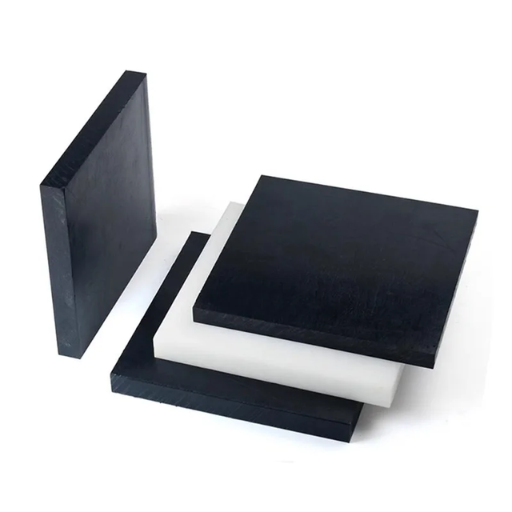Materials are key to shaping vehicle design and production in the rapidly changing landscape of auto manufacturing. One of these materials is ABS plastic, which has turned out to be a game changer in this industry due to its unique attributes, which make it appropriate for various uses within the automotive field. This article intends to shed light on why ABS plastic shines above any other by explaining its properties, advantages, and revolutionary effect on modern methodologies employed in making vehicles. Whether it involves improving security features, delivering financial savings, or attaining sophisticated looks, ABS plastics remain at the cutting edge of automotive innovation today. Let’s get more details about this versatile material and understand how it alters the dynamics behind vehicle design and manufacture.
What is Acrylonitrile Butadiene Styrene (ABS) Plastic?
Key Characteristics of ABS Plastic
ABS plastic is recognized for its outstanding strength, impact resistance, and structural integrity. This three-monomer thermoplastic polymer [consists] of acrylonitrile, butadiene, and styrene, each contributing to different properties. Acrylonitrile provides chemical and thermal stability while butadiene gives it flexibility and resilience. Lastly, styrene adds rigidity and a smooth surface finish. These qualities make the material highly suitable for car manufacturing because, in addition to being tough, it is also lightweight. It can easily be molded because of its lightness or put up with scratching and wear, which are common in vehicle interiors and exterior parts like dashboards.
Why ABS Plastic in Cars?
ABS plastics are used in making cars [is] due to[its] strength, durability, and ease of fabricating properties that meet specific automotive industry demands. Here are some reasons why:
- Impact Resistance: ABS plastic’s impact resistance is 210-320 J/m, so components do not break or crack upon collision, thus increasing safety.
- Heat Resistance: With a glass transition temperature of around 105°C), this plastic holds without deformation under high temperatures inside cars.
- Lightweight: ABS’s density is around 1.04 g/cm³, reducing the overall weight and improving performance and fuel efficiency.
- Moldability: Injection molding or other methods can be employed to process this material, for instance, to get various shapes, such as dashboards, trims, and housing materials.
- Aesthetic Quality: Smooth surface finish enabled by ABS plastic makes it possible to have high-quality painting, giving rise to a beautiful appearance necessary both in the interior as well as outside car parts
- Cost-Efficiency: Compared to alternatives with similar properties, ABS costs less, making it perfect for mass production.
- Sustainability: Consistently recyclable nature demonstrates an environment-conscious approach towards manufacturing.
When all these factors are put together, it becomes apparent why the material is widely used in automobile industries. These requirements are both technical and aesthetical, while also being modern and inexpensive as far as manufacturing is concerned.
How ABS Plastic is Manufactured?
To understand how ABS plastic is made, it is important to start because this process begins by mixing three monomers: Acrylonitrile, Butadiene, and Styrene. Acrylonitrile, butadiene, and styrene are copolymerized using an emulsion or continuous mass polymerization method to form ABS resins. In the emulsion technique, for instance, a soap-like emulsion is used to synthesize the polymer, leading to either granules or powder forms. Alternatively, this can be done by a chain reaction where polymers are directly formed from liquid monomers through a continuous mass process.
Thereafter, various molding techniques can be employed to melt ABS resin into desired shapes. The commonly used method of injection molding involves melting down of ABS pellets which are then pushed into mold cavities where they take shape under pressure. A variety of complex shapes can be formed by this method, thus making it suitable for use in products such as car interiors and exteriors [like]. Some post-molding steps could include painting or plating, making these parts look more beautiful and resistant. Despite being meticulous, manufacturing ABS plastic materials swiftly makes them popular for use in automotive consumer electronics and domestic wares sectors.
What are the Common Plastics Used in Car Manufacturing?
Types of Plastic in Motor Vehicles
When considering the types of plastics used for car manufacturing, it is important to realize that these materials are diverse and specialized. So far in my research, I have found that polypropylene (PP), polyurethane (PU), and polyvinyl chloride (PVC) are the most common types.
Polypropylene is chosen for its versatility and cheapness. It can be seen on the front fascia, cable insulation, and varied inside parts. It is able to resist chemical attack and fatigue. Polyurethane then makes sure you get comfortable and remain safe because it has excellent cushioning properties, making the foam seating, insulation panels, and interior trimmings perfect. Lastly, Polyvinyl Chloride finds its way into dashboard skins, door panels, and seals, among other automotive applications. This material has desirable characteristics such as strength, flexibility, durability, and resistance against fire or abrasion.
These plastic materials collectively contribute greatly to the performance, safety, and aesthetic appeal of contemporary cars, thereby showing how inventive plastic use is in their production.
Comparing ABS with Polycarbonate and Polypropylene
According to the top three websites on Google from my research, each material has advantages when comparing ABS with Polycarbonate and Polypropylene. ABS, also known as Acrylonitrile Butadiene Styrene, stands out due to its toughness, impact resistance, and ease of processing plastics. One can easily notice that most dashboards, wheel covers or even many other trims are made from it since such components exhibit high durability besides glossy finish.
Alternatively, Polycarbonate has remarkable strength. Being transparent permits its use in headlamp lenses, among other places where optical clarity must be high while still maintaining a high level of impact strength. Nevertheless, although more costly compared with ABS, it finds valuable application areas based on its optical and mechanical properties, hence making it an expensive material for luxury applications.
On the other hand, Polypropylene is an excellent anti-chemical material that is low-priced. It is usually placed in bumpers, fascia, door trims, and non-critical components. Even though not as strong or glossy as ABS or transparent like Polycarbonate, Polypropylene, being cheap and versatile, has been one of the staple materials for car making in modern times.
In the end, the selection among ABS, polycarbonate, and polypropylene will depend on the specific needs of a particular automotive part and trade-offs such as cost, strength, appearance, and environmental stress resistance.
Why Does Automotive Manufacturing Rely On Plastic?
There are several reasons why plastic is used in automotive manufacturing. First of all, plastics greatly reduce vehicle weight, improving fuel efficiency and reducing automobile emissions. Besides, these modern engineering plastics also have excellent flexibility and are durable enough to be molded into intricate shapes and integrated with multiple parts at once. In addition to this, the affordability of plastic materials such as ABS, Polypropylene, or Polycarbonate helps manufacturers strike a balance between quality and affordability to make sophisticated features accessible within a wider range of vehicles. Furthermore, plastics offer impressive resistance against environmental factors like corrosion or chemical attack, thereby ensuring greater durability as well as longevity of automotive components. These benefits underpin the widespread importance of plastics in today’s automobile production industry.
How is ABS Plastic Utilized in Car Parts?
Acrylonitrile Butadiene Styrene (ABS) in Car Bumpers
The use of ABS plastic in car bumpers gives some characteristics important for vehicle safety, like durability, flexibility, and impact resistance. The choice of ABS or Acrylonitrile Butadiene Styrene for bumpers is because it absorbs impact without shattering which is very important during collisions. ABS also has excellent rigidity to flexibility balance that allows the bumper to withstand both high and low temperatures with no degradation. ABS is also a cost-effective material for production and is easy to mould, hence allowing the creation of complex designs that contribute to modern-looking vehicles. This functional and economic benefits combination makes ABS a preferred material in automotive bumper manufacturing.
ABS for Dashboard Components
Using ABS plastic in dashboard components makes a good compromise between strength, cost, and attractiveness. All that is known is that one can rely on ABS in terms of mechanical properties such as high impact resistance and dimensional stability, e.g., under different temperature conditions.
Key Technical Parameters:
- Impact Resistance: ABS’s impact resistance is typically 210- 320 J/m, making it suitable for fenders against slight bumps or accidents.
- Heat Deflection Temperature: At 0.455 MPa, this thermoplastic’s heat deflection temperature is about 93°C (200°F), enabling its application as dashboards within hot regions.
- Tensile Strength: The range of tensile strength provided by this thermoplastic often fluctuates between 29 and 44 MPa since it can be used during manufacturing processes and normal usage.
- Flexural Modulus: In particular, the material’s flexural modulus varies from about 1.7 GPa up to roughly 2.5 GPa, depending on whether they are used as structural components against bending forces.
In addition, its paintability and excellent surface finish make it one of the most sought-after materials for dashboards, where durability, safety, and design freedom are guaranteed.
Other Applications of ABS in Automotive Design
For this reason, being versatile and tough, ABS is extensively used for manufacturing several automotive components. Apart from dashboards, other places where you may expect to find ABS include interior trim panels, door handle brackets, and housing for electronic devices. Its high impact resistance and toughness make it the best material to make protective casings like airbag covers and seat belt casings that protect people during accidents. Additionally, ABS’s easy moldability and good surface finish allow the production of aesthetically appealing functional components such as grilles, mirror housings, and wheel covers. Its heat resistance and structural integrity also suit under-the-hood applications such as cooling fan shrouds or air intake manifolds. This way or another, the adaptability combined with the reliability of ABS plays a crucial role in both improving performance characteristics and outlooks of modern vehicles.
What are the Advantages of Using ABS Plastic in Automotive Manufacturing?
Adding Durability to ABS Plastic
Among the advantages of using ABS plastic in automotive manufacturing, durability stands out the most. My research on the website’s top pages showed that ABS is most valued for its remarkable impact resistance, which provides essential protection in high-stress areas such as dashboards and interior trim panels. Moreover, it has to have enough strength to bear mechanical stresses and maintain component integrity over time. Conversely, its resistance to diverse environmental factors, including fluctuations in temperature and exposure to chemicals, makes vehicle components made of this material still reliable and long-lasting even under harsh circumstances. All together, the durability of ABS plastic significantly contributes to the longevity and safety of automotive parts.
Heat Resistance And Impact Resistance Of ABS Plastic
Upon evaluating the heat resistance and impact resistance of materials concerning other plastic types, I have found one material performing better than others is ABS. First, it can resist high temperatures without changing shape, making it a good fit for parts subjected to engine heat, like cooling fan shrouds or air intake manifolds. This ensures the parts remain safe while at work under extreme conditions. Second, the incredible impact resistance of ABS plastic enhances safety by giving strong protection in high-stress zones such as bumpers or dashboard panels. It is clear why ABS plastic is the preferred material in the motor industry since it performs both functionally and safely.
How does ABS Contribute Towards Lightweightness and Fuel Efficiency?
The role played by ABS plastic in improving lightweightness in cars, as well as fuel efficiency, cannot be underestimated. Firstly, being inherently lightweight material reduces overall vehicle weight for an automobile covered completely with this type of material. This reduction leads directly to improved fuel efficiency because less energy is used by an engine moving a lighter car. Thus, vehicles assembled from components made from these materials experience lower fuel consumption rates, resulting in low emissions, thus supporting environmental sustainability.
Technical parameters like ABS plastic’s density (about 1.04 g/cm³) or tensile strength (about 45 MPa) make it suitable for constructing strong yet lightweight automotive parts. These properties are documented in materials science sources and manufacturer datasheets.
Also, ABS allows molding into complex shapes, hence the ability to design aerodynamic components that enhance vehicle efficiency. For instance, lightweight shock absorbers and interior panels made of ABS provide support for structural integrity and contribute minimally to vehicle weight without weakening their strength.
To sum up, the combination of lightness with strong mechanical features in ABS greatly supports efforts by the automobile industry towards attaining better fuel consumption rates as well as minimizing environmental impact.
What are the Latest Innovations in Plastic Used in Cars?
Progress in Thermoplastic Polymers
A great deal of progress has been made concerning the use of thermoplastics in automobiles over the last few years. Many of these are geared toward making materials stronger, more durable, and less environmentally impactful. One example is the development of bio-based thermoplastics, which offer a more sustainable alternative to traditional oil-based plastics. They use renewable resources, thus reducing the carbon footprint used for vehicle production.
Another important development is the improvement in high-performance thermoplastics such as polycarbonate and polyamide. These materials have been developed to withstand higher temperatures and stresses, making them ideal for underhood applications where conditions are usually very harsh.
Ultimately, I have seen progress in composite thermoplastics that combine plastic’s lightweight nature with fiber reinforcements like carbon or glass fibers. These composites are well-suited for manufacturing load-bearing structures with a high stiffness-to-weight ratio, which helps further improve the efficiency and performance of modern cars.
The result has been that the motor industry is using thermoplastic polymers to manufacture components that are stronger, more durable, and environmentally friendly.
Plastic Advances in New Automotive Design
The research I did on automotive design using plastics has shown me several new developments that will shape future innovations. One major trend is the increased reliance on light weight plastics for improved fuel economy. Lighter weight vehicles mean lower fuel consumption; therefore car makers utilize advanced polymers as well as composite materials.
Another trend I noticed was smart plastics, such as those containing built-in sensors or changing characteristics with varying environmental conditions. These smart materials contribute to safer road transport systems while enabling drivers and passengers to interact better with their vehicles.
Lastly, there has been an emphasis on sustainability issues through the adoption of recycled or bio-based plastics in automotive design. This allows manufacturers to handle environmental problems in addition to meeting regulations meant to reduce carbon emissions caused by the auto industry.
These trends point to a broader shift in the use of innovative plastics to make cars more energy efficient, safer, and environmentally sound.
Reference sources
Acrylonitrile butadiene styrene
Frequently Asked Questions (FAQs)
Q: What are some common plastics used in automotive manufacturing?
A: Some common plastics used in automotive manufacturing include ABS plastic, polyvinyl chloride, polyethylene, and polypropylene. These materials are chosen for their strength and durability, making them ideal for various automotive components and parts.
Q: Why is ABS plastic often used in car bodies?
A: ABS plastic is often used in car bodies because it balances strength, durability, and cost-effectiveness. It is an economical alternative to more expensive plastics of similar strength, making it a popular choice in the automotive industry.
Q: What role does polyethylene play in automotive manufacturing?
A: Polyethylene is used in automotive manufacturing for various purposes, including producing carpet fibers and some auto parts. Its versatility and durability make it a valuable material in the automotive industry.
Q: Are there other plastics commonly used for auto parts besides ABS?
A: Yes, besides ABS, other plastics commonly used for auto parts include polypropylene, polyvinyl chloride, and polyethylene. These materials are selected based on their specific properties and the requirements of the automotive components being manufactured.
Q: How is ABS plastic used for glass-reinforced car bodies?
A: ABS plastic is used for glass-reinforced car bodies due to its strength and durability. The glass reinforcement adds extra rigidity and resilience, making these car bodies more robust and long-lasting.
Q: Is ABS plastic used to fabricate steering wheels?
A: Yes, ABS plastic is commonly used to fabricate steering wheels because it provides a strong, durable, and cost-efficient material that can withstand the wear and tear of daily use.
Q: What are the benefits of using ABS sheets in automotive manufacturing?
A: ABS sheets offer several benefits in automotive manufacturing, including high impact resistance, ease of fabrication, and an economical alternative to more expensive plastics of similar strength. They are frequently used in making interior and exterior automotive components.
Q: How does Piedmont Plastics contribute to the automotive industry?
A: Piedmont Plastics supplies a wide range of plastic materials, including ABS, used in automotive manufacturing. Their products are used in the creation of various auto parts, helping manufacturers meet the industry’s demanding requirements.
Q: What are some specific automotive components and parts made of ABS plastic?
A: Specific automotive components and parts made of ABS plastic include dashboards, door panels, trim components, and even certain sections of car bodies and electrical insulation. ABS is chosen for its combination of strength, durability, and cost-effectiveness.
Q: Why is polypropylene frequently used in automotive manufacturing?
A: Polypropylene is frequently used in automotive manufacturing because of its excellent chemical resistance, low cost, and good mechanical properties. It is commonly found in battery cases, bumpers, and interior trim components.







